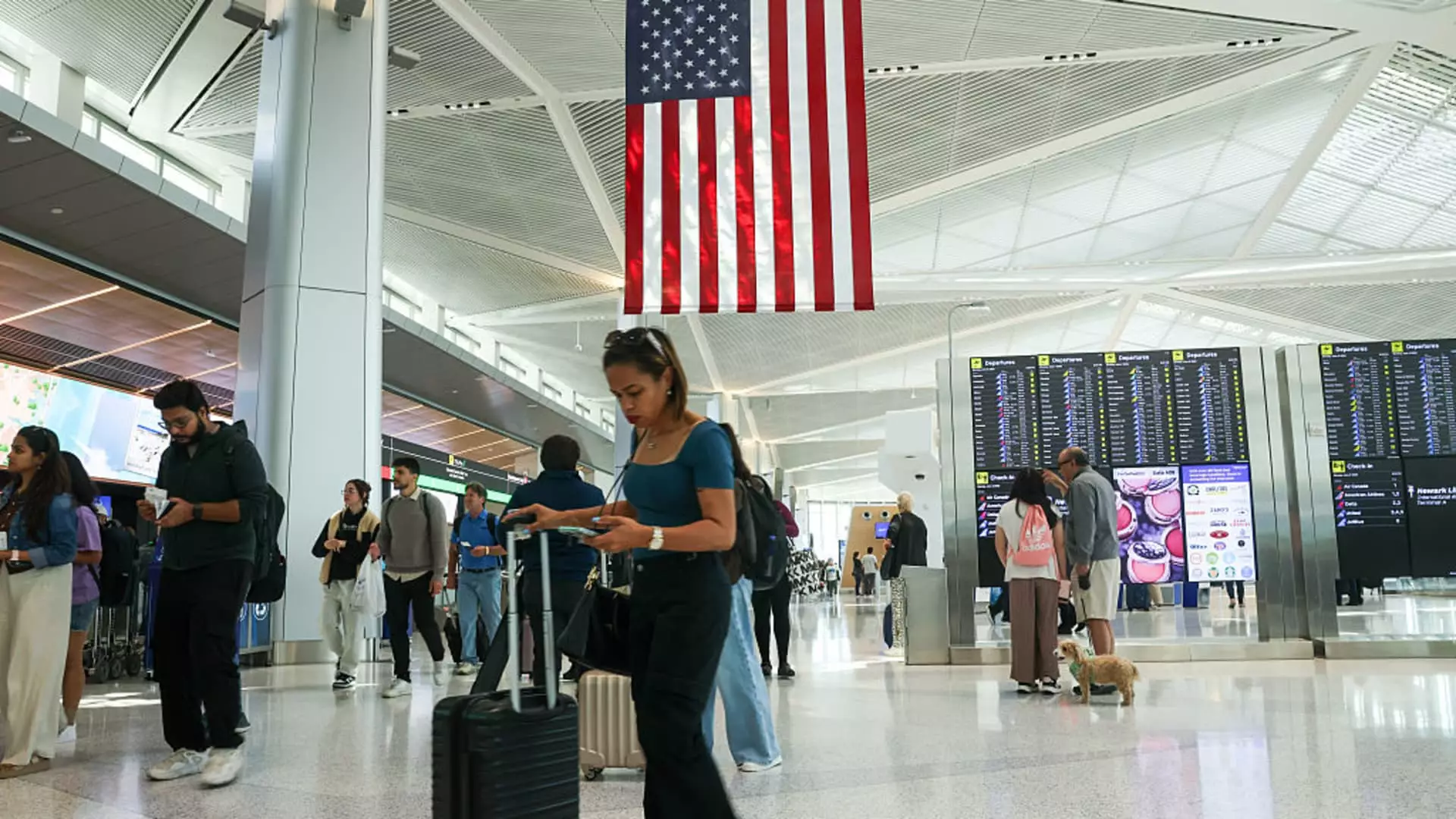As the summer sun shines on a seemingly optimistic horizon for air travel, beneath the surface lies a disconcerting truth: the industry teeters on the edge of instability. Despite the influx of millions of travelers over the July 4 holiday, airlines are painfully aware that this fleeting season masks deeper economic vulnerabilities. The narrative of steady growth is increasingly difficult to sustain when half the year remains unpredictable, marred by lingering financial uncertainties and external shocks. Airlines, once confident and optimistic, now operate with a cautious skepticism, knowing that today’s lull could easily spiral into a more profound downturn.
The fall in domestic fares to their lowest since 2021 is often portrayed as a sign of a healthy, competitive market offering consumers affordability. Yet, this shift signals something far more troubling—an industry desperate to cling to its revenue streams amidst waning demand. Airlines are actively discounting, slashing prices to fill increasingly empty seats, a clear indicator that profit margins are under assault. This strategy may buy short-term passenger numbers, but it jeopardizes long-term viability, creating a race to the bottom that ultimately threatens the future stability of the entire sector.
Economy’s Shadow Looms Over the Skies
The broader economic landscape is undeniably influencing airline fortunes. Despite recent job market resilience and robust consumer spending data, the demand for air travel remains tepid at best. The disconnect between economic indicators and airline revenue signals a nuanced reality: travelers are less inclined to book flights amid growing economic fears, inflation, and geopolitical tensions. The retraction in international and domestic air travel spending paints a grim picture of a customer base that is cautious, if not outright hesitant, to commit to flights that once seemed routine.
The fact that airlines are pulling back forecast predictions for 2025 underscores their deepening uncertainty. Lesser overseas visitors, the threat of tariffs, and persistent inflation weigh heavily on their strategic plans. For a sector that heavily relies on timely forecasts for investment and expansion, this fog of unpredictability is a recipe for precarious financial footing. Airlines are being forced to adopt defensive postures—cutting unprofitable routes, delaying expansions, and reducing capacity—decisions that could cascade into longer-term profitability issues.
The False Comfort of Summer’s High Travel Volumes
The current surge in summer travel exposes a complex paradox. On the one hand, the TSA’s projection of over 18.5 million travelers suggests a booming holiday season. On the other, this peak is a fleeting blip—an annual anomaly rather than a reflection of sustained demand. Historically, airlines generate their most significant profits in the second and third quarters, yet even during this period, signs of strain are evident. The record-breaking travel days mask an underlying reluctance that could threaten to undermine these profits if demand falters once the holiday rush subsides.
International travel, long a lucrative segment benefiting major carriers, reveals an uneven recovery. Lower fares and increased flight volumes do little to mask the sluggish post-pandemic bounce-back, especially as travelers remain wary of ongoing international tensions, visa restrictions, and rising costs abroad. The decline in international fares to Europe and Asia further signals a cautious, price-sensitive traveler base, diminishing airlines’ ability to capitalize on lucrative global markets.
The Imminent Risks and the Road Ahead
Ultimately, the airline industry’s current trajectory is unsustainable. Market forces, economic uncertainties, and consumer behaviors are converging to create a perfect storm. Airlines’ attempts to stabilize by cutting capacity and flights may provide temporary relief but set a dangerous precedent—an uncertain future where profitability diminishes, and the industry’s resilience is tested. Passengers might enjoy lower fares now, but these benefits come at a cost: diminished service quality, fewer options, and the potential for more significant disruptions.
What this scenario clearly reveals is that the industry’s apparent stability is an illusion, a fragile façade maintained by short-term fixes rather than robust foundational growth. Until global economic conditions improve and consumer confidence rebounds, the airline sector will remain caught in limbo—struggling to adapt while the risk of a pronounced downturn looms large. The question is whether airlines can navigate these turbulent skies without sacrificing long-term sustainability to chase fleeting summer gains.


Leave a Reply